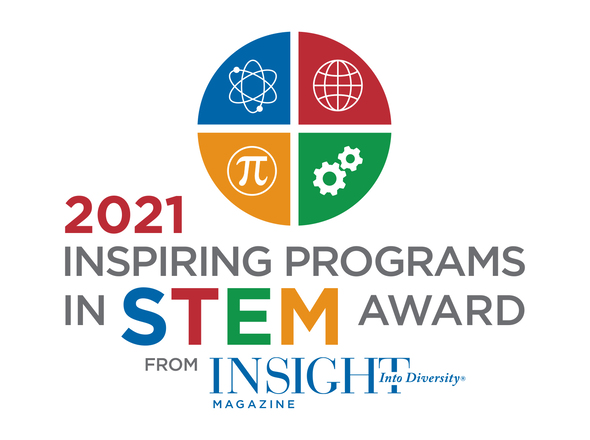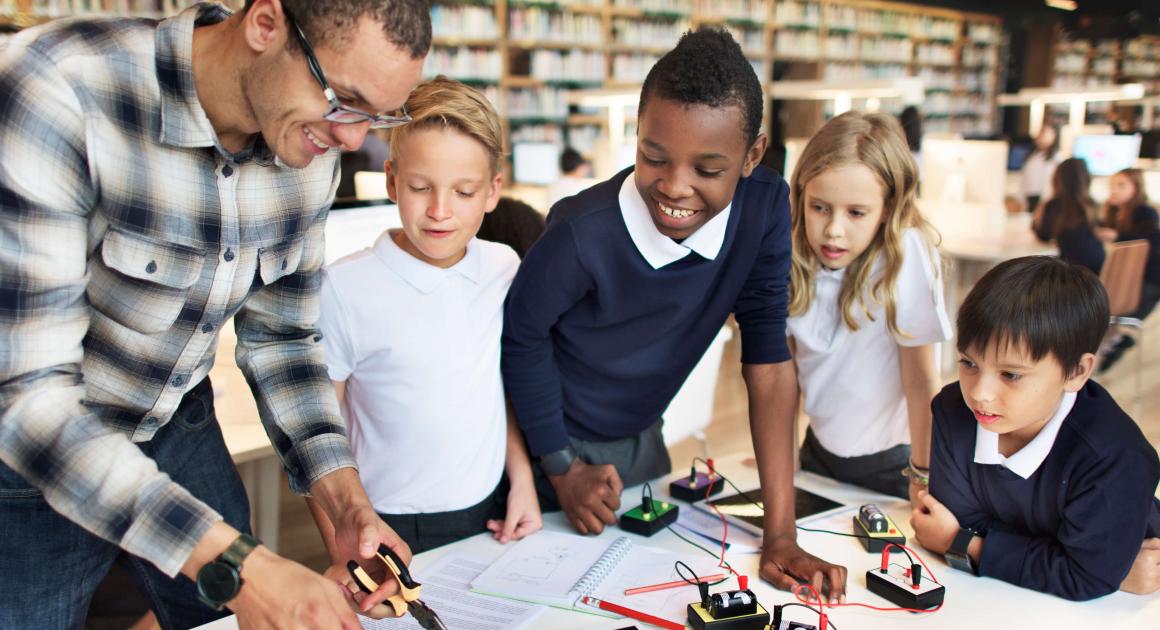Future Urban STEM Educators Clubs
Be part of the transformation and social impact that comes with encouraging a greater understanding of science, technology, engineering and math (STEM). FUSE clubs bring interested high school students together with sponsoring teachers to explore and share STEM information with middle school students. This creates a guided exploration of diverse STEM categories, while building confidence in a teaching career as well.
For school administrators
Ignite increased STEM engagement at your school by using the ready-made FUSE educational modules and starting a club. FUSE modules involve problem-solving and scientific inquiry at a local level, such as urban farming or examining water pollution in the community. Davenport University's College of Urban education has team members available to help you implement this program. FUSE clubs require a biweekly and monthly commitment from both high school-age club members and their sponsoring teacher. We can design a custom structure that works for your school or out-of-school-time provider.
Development of the FUSE program was supported by a grant from the National Science Foundation.
FUSE club commitment and opportunities
- Club members meet bi-weekly after school with a sponsoring teacher to create lesson plans and activities
- Club members lead monthly STEM-instruction sessions with middle school students
- Club members can enroll in Dual Enrollment courses or Middle College programs and receive college credit from Davenport at participating schools
- Club members have access to mentoring and tutoring from Davenport students majoring in STEM disciplines

Hosting a FUSE Club
If you are interested in hosting a FUSE Club at your school or you are a student interested in participating in a FUSE Club, please contact:
Meaghan Polega
CUE UG Field Coordinator | Associate Department Chair
Sample FUSE modules
Chemical Reactions
In the Chemical Reactions module, students will explore indicators of chemical reactions and analyze chemical equations for reactions through several lab activities and demonstrations. Students will make the connection between the chemical equation and the real substances to see that solid and gas produced in the actual reaction are also in the products of the equation. In one activity, students will form CaCl2 (chalk) as a product of a reaction. As an art activity, students will then use sidewalk chalk to draw explanations of the reactions they have just completed. Students will also explore the life of Reatha Clark King, an African American food science chemist.
Polymers (virtual version available)
In the Polymers module, students will create a hydrogel polymer. A polymer is a long chain of molecules linked together. Polymers have many applications including medicinal and commercial. Students will create artwork using slime to explore art applications. Students will explore the life of Percy Julian, an African American biomedical chemist.
Sound (virtual version available)
In the Sound module, students will explore the physics of sound waves and sound wave energy using a variety of musical instruments including palm pipes, mbira, and homemade instruments. To extend learning into the realm of the arts, students will make music. Math extensions are also available for this module to explore the relationship between fractions and sound. After practicing, students will create their own advertisement jingle for a real or fictional product. Students will explore the life of recording artist Kesha.
Urban Farming
In this biology-based module, students will review the role of photosynthesis to grow plants. Students will use pondweeds to demonstrate the relationship between sunlight, carbon dioxide, and oxygen in the photosynthesis process, which can be shown through chemical indicators. Students will then use cyano-typing to investigate how solar power can be used in art. Cyano-typing involves exposing UV light (sunlight) to photosensitive materials to produce an image. Students will explore food insecurity and food justice in their local municipality as a cultural component.
Race Car (virtual version available)
In the Race Car module, students will explore physics principles of kinetic energy, potential energy and energy transfer by using toy cars and tracks. This module requires students to complete extensive data analysis and graphing to connect science and math. Students will create race track sculptures using a multi-media artistic approach. Finally, students will learn about Daniel Suárez, a NASCAR driver of Mexican heritage.
Robotics
In the Robotics module, students will use OzoBots to create basic robotic programs. Students will program the robots to move through a maze with multiple turns and at various speeds, avoiding obstacles when necessary. Students will create t-shirt logos or buttons for their team, similar to those worn by the competitive robotics community. To explore culture, students will learn about a robotics team in Arizona made up of undocumented immigrant students.
Cell Division - Surface Area and Volume (virtual version available)
In the Cell Division - Surface Area and Volume module, students will explore the relationship between biology and math. By calculating the surface area and volume of small blocks students will make conclusions about why cells are so small. In making connections to art, students will design a tiny house, maximizing the small footprint. Culturally, students will learn about the biological contributions of George Washington Carver.
Water Quality (virtual version available)
In the Water Quality module, students will conduct water quality tests on samples from local sources. While learning about water quality standards, students will conduct tests for pH, nitrates, chlorine and lead. Students will then create a script (debate, news segment, rally) to perform regarding an environmental concern. Students will explore environmental justice and how it relates to communities of color including uranium exposure on Navajo reservations and the Flint water crisis.
This material is based upon work supported by the National Science Foundation under Grant No. 1758370. Any opinions, findings, and conclusions or recommendations expressed in this material are those of the author(s) and do not necessarily reflect the views of the National Science Foundation.
2021 Inspiring Programs in STEM Award
Davenport University was recognized as one of the recipients of the 2021 Inspiring Programs in STEM Award from INSIGHT Into Diversity Magazine. This award is presented to institutions whose programs inspire a new generation of young people to consider STEM careers as well as support working professionals in these fields.

Sponsored by:

